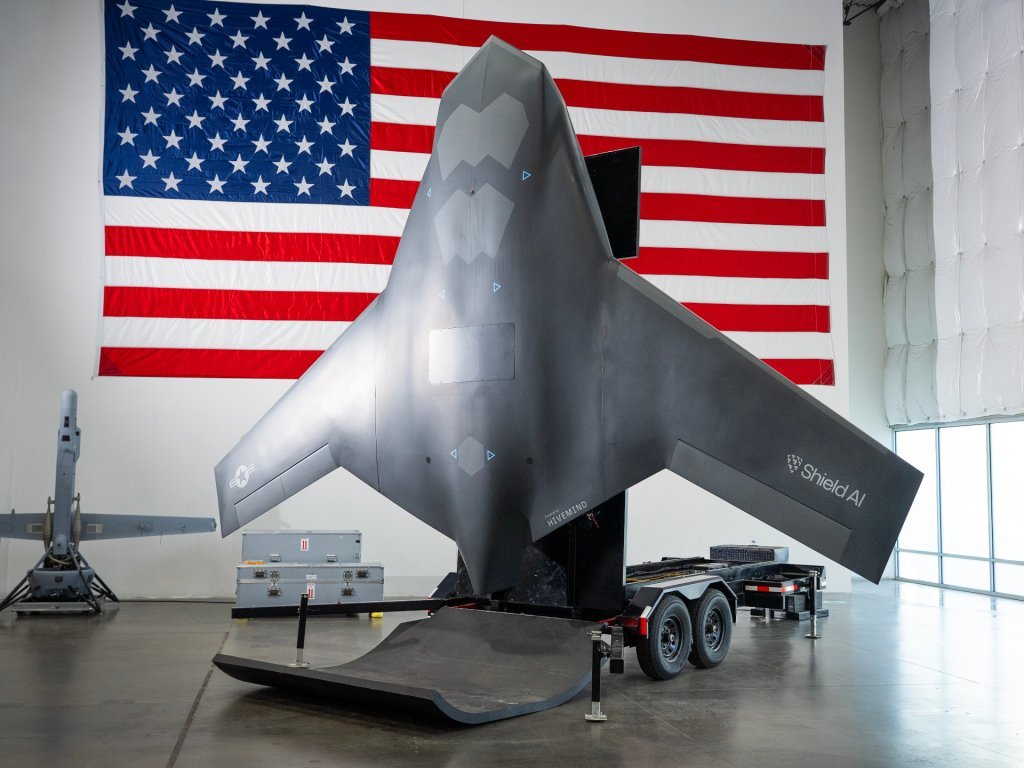Get We Are The Mighty’s Weekly Newsletter
Military culture and entertainment direct to your inbox with zero chance of a ‘Reply All’ incident
In the 1950s and 60s, few defense manufacturers were involved with vertical or short take-off and landing (V/STOL) platforms. The Bell XV-3 tilt rotor and the Doak VZ-4, with its two tilting ducted fans, were two of the first. But it was the U.S. military’s ambitious tilt-wing assault transport, the LTV XC-142A, that promised helicopter-style vertical lift with turboprop speed.
In 1959, the U.S. Air Force, Army, and Navy initiated development of a V/STOL aircraft designed to augment rotary-wing aircraft, serving as an assault transport capable of flying farther and faster than the military’s current helicopters. Enter the Ling-Temco-Vought XC-142A: the V/STOL replacement for Sikorsky’s noisy but reliable CH-37 Mojave.
Related: The world’s first jump jet: How we got the legendary Harrier II
A joint-service effort to develop the new aircraft stalled after the Navy withdrew over hazardous deck downwash, flight-test headaches mounted, and a 1967 crash killed three crew members. With no unified requirement to carry it into production, the program was canceled despite its strong early results. Between 1964 and 1967, five prototypes logged 488 flights and 420 hours; hovering, transitioning, and even loading Jeeps and towed howitzers. But the promising airframe never materialized. One prototype went to NASA; the survivor now resides at the National Museum of the U.S. Air Force.

The Air Force, Army, and Navy all had different requirements for the XC-142A, but the basic needs were a payload capacity of 10,000 pounds, an operational radius of 250 miles, and a maximum speed of 345 to 460 miles per hour. In a 1961 agreement, the three agreed to work together on the project under the Tri-Service Assault Transport Program, led by the Bureau of Naval Weapons.
For a cargo aircraft, the design was straightforward. The cargo area of the fuselage was 30 feet long, 7.5 feet wide, and seven feet high. It was rated for four tons of cargo or 32 passengers. Power came from four 3,080-horsepower GE T64 Turbo shaft engines equipped with 15.5-foot fiberglass propellers made by Hamilton Standard. A common driveshaft linked the engines, and another driveshaft connected to a three-bladed tail rotor. This system allowed all five propellers to operate, even if three engines were down. The aircraft had a tricycle landing gear, and the crew consisted of two pilots and a loadmaster.

The one area where it differed from today’s V-22 Osprey is the use of a tilt-wing instead of a tilt rotor. The wing was 67 feet long and tilted vertically for V/STOL operations, using a centrally located motor that drove two screw jack actuators. At the same time, a switch on the collective lever controlled the tilt. The wing itself was capable of rotating to 98 degrees, allowing it to hover while experiencing a tailwind. The pitch was controlled by a separate tail rotor mounted horizontally instead of vertically like a helicopter, and was declutched for conventional flight.
Testing began in September 1964, using the number 2 aircraft, which flew conventionally at 10,000 feet at approximately 150 knots, while the flight characteristics were checked. The first flight was a success, demonstrating smooth handling all around. In December, it completed its first hover, and in January 1965, it completed its first transition. Three of the prototypes participated in operational V/STOL flight testing, which involved loading Jeeps, trucks with towed howitzers, and other cargo, all passing with flying colors.

Despite the promising initial results, the Navy withdrew from the program after concluding the XC-142A’s downwash was too severe for safe shipboard and assault operations. Compared with the HR2S/CH-37 it was meant to replace, the tilt-wing produced substantially higher downwash, which would have restricted it to prepared landing zones and undercut its assault role. The Navy’s exit let engineers drop carrier-specific features, reducing weight and complexity, but it also removed a key sponsor for the program.
The Navy’s exit did nothing to diminish enthusiasm for the XC-142A. In 1966, while testing was still ongoing, the Air Force requested a proposal for a production version to be designated the C-142B, equipped with upgraded engines and a more streamlined cockpit. Moreover, a demonstration of the XC-142A was a hit at the 1967 Paris Air Show, and the program was only a few weeks behind schedule, which is a pretty good record for an experimental aircraft.

Testing continued, and issues were identified. The aircraft exhibited excessive noise and vibration, which, combined with a high pilot workload, created a challenge for the crew. Another problem was wing flex. The critical issue was the driveshaft system. This, along with pilot error, caused several hard landings, and in 1967, a driveshaft failure to the tail rotor caused an unrecoverable nose-over crash that killed three crew members near the LTV plant in Dallas.
Ultimately, however, the program was canceled when the development team could not establish a singular mission for a V/STOL transport. The Navy wanted safe deck operations and low downwash. The Army wanted assault landings on rough LZs. The Air Force leaned toward longer range and speed for theater lift. The tilt-wing couldn’t satisfy all three without breaking weight, complexity, or safety. By the mid-1960s, CH-47 and CH-53 helicopters covered assault lift, while C-123 and C-130 aircraft handled dirt-strip logistics. The XC-142A’s ability to do both just wasn’t compelling enough to displace the existing fleets.

Five tilt-wing XC-142As were built for testing, making 488 flights with 39 different pilots at the controls for a total of 420 flight hours. Although the program was ultimately canceled, the technological advancements achieved during development made it worthwhile. Many pilots stated that it ended too early and needed more time to resolve the issues. The lone surviving prototype was turned over to NASA for more testing and research. In 1970, it was flown to the National Museum of the U.S. Air Force at Wright-Patterson Air Force Base, where it is now on display in hangar number 4.








